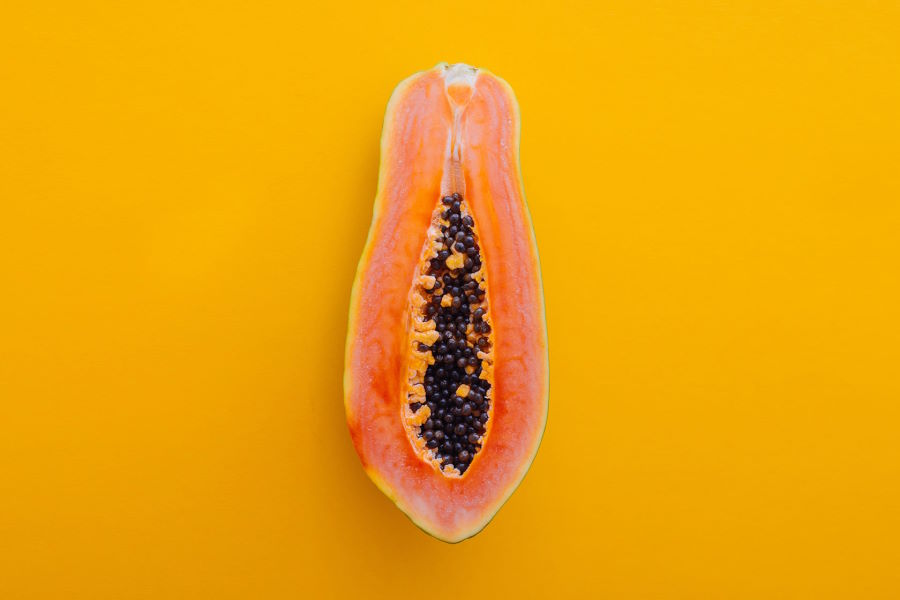When you are to trying to get pregnant, the vagina is the first port of call, so ensuring there is a healthy environment to welcome the sperm is vital in optimising fertility.
We hear lots about the gut microbiome (mostly referred to as ‘gut bacteria’) and its importance on health and wellbeing, but the vagina has a microbiome too and can play an important role in getting pregnant and having a healthy pregnancy and baby.
A healthy, stable vagina will be naturally acidic, somewhere around pH 3.5 to 4.5.2 A type of bacteria, called Lactobacillus, live in the vaginal cell walls and produce lactic acid to keep the pH within this delicate range.2 If they aren’t present in high enough numbers, and producing enough lactic acid, the vagina can become too alkaline and there is a risk of growth of pathogenic bacteria or yeasts that may cause infections, unpleasant symptoms and reduce chances of getting pregnant.2
Lactic acid also plays an important role in helping to appropriately stimulate the female immune system,4,5 by increasing the production of anti-inflammatory cytokines (chemical messengers) and reducing the production of pro-inflammatory cytokines.6,7 A balanced female immune system is vital for successful conception and pregnancy.
The type of personal care products, lubricant, washing powder, toilet paper and even your choice of hair removal can all impact this delicate vaginal microflora and may lead to imbalances and infections.
I recommend all of my clients take Invivo’s Vaginal Ecologix test1 when they begin their 3-month Optimum Fertility Package with us. It’s a simple and painless test to carry out and it gives lots of clues as to the health of the vaginal environment.
The Vaginal Ecologix report tells us the vaginal pH, the levels of four different Lactobacillus species, along with levels of other bacteria and fungus that may negatively affect vaginal health, plus an immune marker that indicates whether there may be inflammation or infection present.1
I was fortunate to attend Invivo’s ‘The Reproductive Microbiome’ training course8 this year and learn from the incredibly knowledgeable Leah Hechtman.9 She shared lots of strategies to support vaginal bacterial balance where test results show lower than optimal pH and Lactobacillus population, and overgrowth of pathogenic bacteria or fungus. I tailor the strategies I use to each couple depending on their Vaginal Ecologix1 results. With some infections its essential to employ strategies for both the male and female client to restore balance.
References
- Invivo Healthcare Ltd (2020) Female Ecologix Test https://invivohealthcare.com/products/diagnostics/vaginal-ecologix/
- O’Hanlon, Deirdre Elizabeth, Come, R. A., & Moench, T. R. (2019). Vaginal pH measured in vivo: Lactobacilli determine pH and lactic acid concentration. BMC Microbiology, 19. https://doi.org/10.1186/s12866-019-1388-8
- García-Velasco, J. A., Menabrito, M., & Catalán, I. B. (2017) ‘What fertility specialists should know about the vaginal microbiome: A review.’, Reproductive BioMedicine Online, 35(1), pp.103–112.https://doi.org/10.1016/j.rbmo.2017.04.005.
- Mossop, H. et al., (2011) ‘Influence of lactic acid on endogenous and viral RNA-induced immune mediator production by vaginal epithelial cells.’ Obstetrics and Gynecology, 118(4), pp.840–846. https://doi.org/10.1097/AOG.0b013e31822da9e9
- Witkin, S. et al. (2011) ‘Lactic acid stimulates interleukin-23 production by peripheral blood mononuclear cells exposed to bacterial lipopolysaccharide.’ FEMS Immunology and Medical Microbiology, 61(2), pp.153–158. https://doi.org/10.1111/j.1574-695X.2010.00757.x
- Hearps, A. C., Tyssen, D., Srbinovski, D., Bayigga, L., Diaz, D. J. D., Aldunate, M., Cone, R. A., Gugasyan, R., Anderson, D. J., & Tachedjian, G. (2017). Vaginal lactic acid elicits an anti-inflammatory response from human cervicovaginal epithelial cells and inhibits production of proinflammatory mediators associated with HIV acquisition. Mucosal Immunology, 10(6), 1480–1490. https://doi.org/10.1038/mi.2017.27
- Ghadimi, D., de Vrese, M., Heller, K. J., & Schrezenmeir, J. (2010). Lactic acid bacteria enhance autophagic ability of mononuclear phagocytes by increasing Th1 autophagy-promoting cytokine (IFN-gamma) and nitric oxide (NO) levels and reducing Th2 autophagy-restraining cytokines (IL-4 and IL-13) in response to Mycobacterium tuberculosis antigen. International Immunopharmacology, 10(6), 694–706. https://doi.org/10.1016/j.intimp.2010.03.014
- Invivo Healthcare Ltd (2020) The Reproductive Microbiome. https://invivohealthcare.com/education/courses/the-reproductive-microbiome/
- Hechtman, L. (2020) Natural Health Fertility. https://www.naturalhealthfertility.com/




